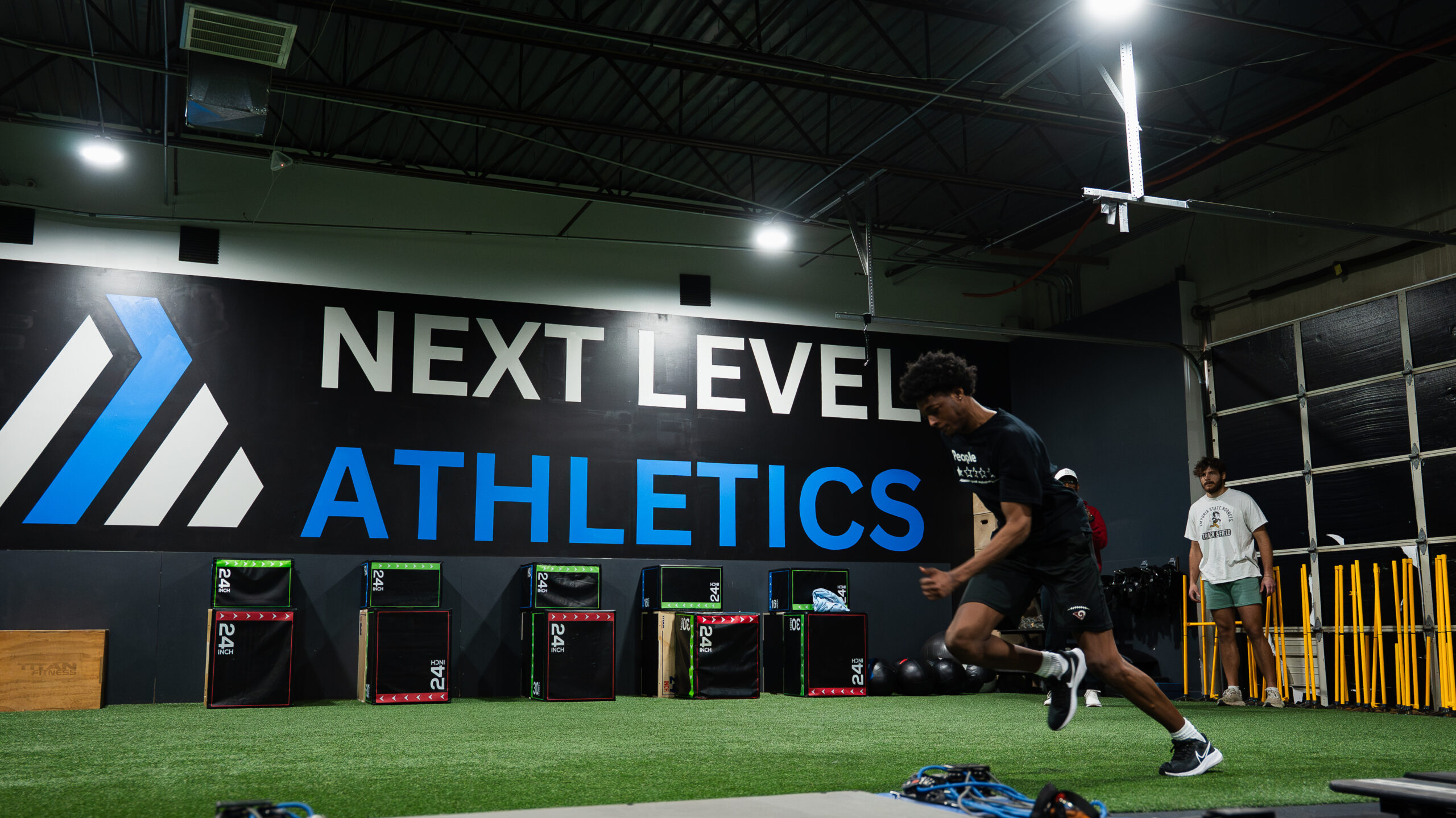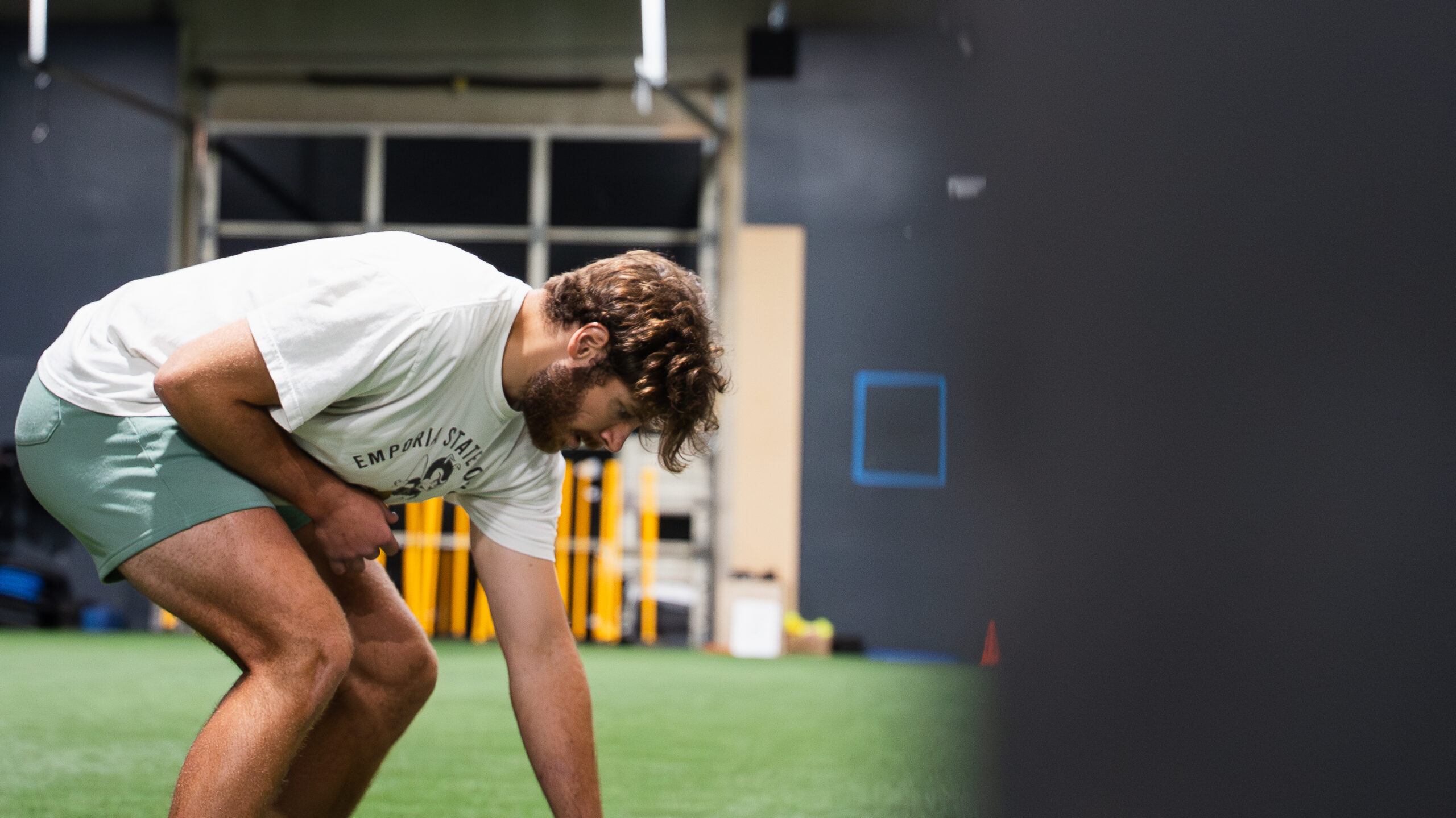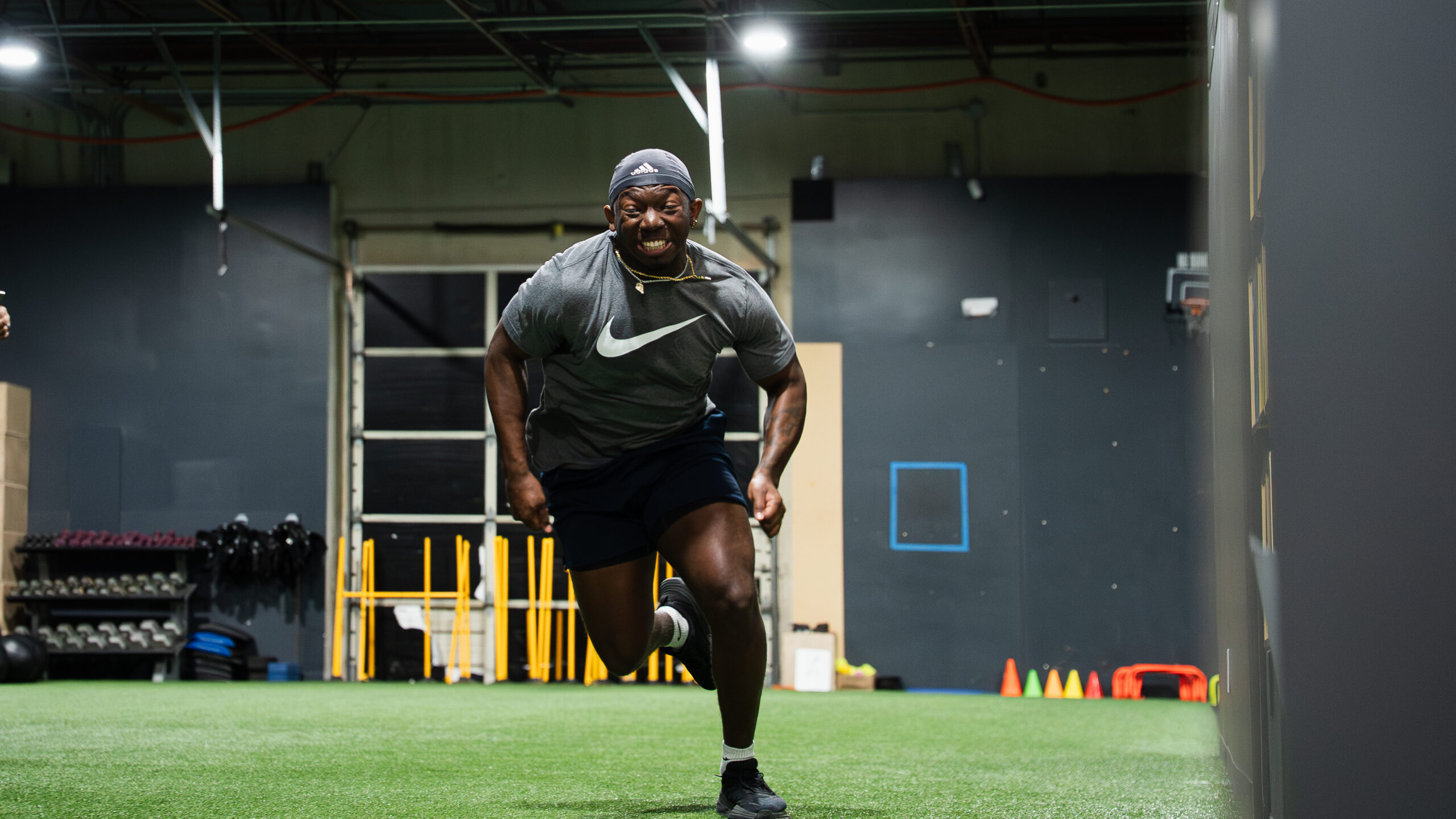Assessments
What is a Next Level Athletics Assessment?
At Next Level Athletics, our Athlete Assessments are a core part of the training journey. It’s the first step we take to understand where an athlete currently stands — and where they’re capable of going. This six-test evaluation helps us measure an athlete’s speed, agility, explosiveness, and vertical power using sport-relevant, performance-based drills. Every new member receives a free baseline assessment when they sign up, and we offer monthly retesting during our community-wide Assessment Days, held on the third Saturday of every month.
These assessments not only help our trainers create customized training plans, but they also keep athletes accountable, motivated, and focused on real progress.
Standing Reach
The standing reach is the first test we perform to create a consistent and accurate baseline for both vertical jumps. The athlete stands tall and reaches upward with one hand, extending through the shoulder and fingertips. This measurement allows us to calculate the true vertical jump height by comparing how far the athlete leaves the ground during their jump versus their standing reach.
• Why we do it: To ensure precise and consistent vertical jump measurements
• Sport relevance: Necessary for calculating vertical metrics in all jumping sports
• What it shows us: An athlete’s reach baseline — the reference point for vertical progress
Standing Vertical Jump (Force Production)
The standing vertical jump is a raw measure of how much force an athlete can produce from a still position. Without the help of a running start, this test reflects pure lower-body power. The athlete dips into a loaded position and explodes straight up, reaching as high as possible. We use a vertical tester or our very own Top Hopper to capture exact jump height. Check out this article to learn more about force velocity and the force velocity curve.
• Why we do it: To evaluate raw lower-body force production and vertical power
• Sport relevance: Useful for basketball, volleyball, football, soccer, and any sport requiring jumps from a static position
• What it shows us: The athlete’s ability to generate explosive power from the ground up
Approach Vertical Jump (Vertical + Explosiveness)
The approach vertical is similar to the standing vertical, but the athlete takes 1–3 steps into their jump. This simulates game-like movement patterns and reflects not just force production, but also timing, rhythm, and technical ability. The extra momentum allows for a higher jump, so it provides insight into how well the athlete can convert speed into vertical lift. Additionally, if you’d like to learn more about the rate of force development and it’s correlation to vertical jumping mechanics press here.
• Why we do it: To measure explosiveness and jump mechanics in real movement
• Sport relevance: Critical for sports like basketball, volleyball, and soccer
• What it shows us: How well the athlete uses momentum and technique to jump higher — not just how strong they are
5-10-5 Shuttle Drill (Agility + Change of Direction)
The 5-10-5 is a classic agility test that measures how fast an athlete can start, stop, and change direction. The athlete begins at the center line, sprints 5 yards in one direction, then 10 yards the other way, and finishes with a 5-yard sprint back to the center. This drill requires balance, control, lateral speed, and quick reactions under pressure.
• Why we do it: To assess an athlete’s agility, footwork, and control while changing direction
• Sport relevance: Valuable for football, baseball, soccer, basketball — any sport with quick cuts or reactive movement
• What it shows us: Lateral quickness, coordination, body control, and the ability to accelerate and decelerate efficiently
20-Yard Sprint (Acceleration + Speed)
The 20-yard sprint measures an athlete’s acceleration and top-end speed in a short burst — just like a game scenario. Athletes begin in a static stance (upright or 3-point) and explode forward for 20 yards, focusing on rapid stride frequency and ground force application. We use electronic timers or stop watches to measure down to the hundredth of a second.
• Why we do it: To evaluate short-distance acceleration and sprint mechanics
• Sport relevance: Essential for nearly every sport — from football to soccer to lacrosse
• What it shows us: Starting speed, explosive drive, sprint technique, and how quickly an athlete reaches max velocity
Broad Jump (Explosiveness + Horizontal Power)
The broad jump is a test of horizontal explosiveness, where the athlete jumps forward from a standing position and lands with both feet. This test measures how much power the athlete can generate in the horizontal plane, which directly connects to sprinting, cutting, and forward movement in most sports.
• Why we do it: To measure total-body explosive power, particularly in the hips, glutes, and hamstrings
• Sport relevance: Great for sports that rely on forward motion and acceleration (track, football, soccer)
• What it shows us: Horizontal force production, lower-body explosiveness, and the athlete’s ability to transfer strength into motion
Why Assessments Matter
Athletes don’t improve by accident — they improve with clear direction and consistent feedback. Assessments are how we track that progress, adjust programs in real-time, and set measurable goals. They also:
• Help our trainers identify specific strengths and weaknesses for an athlete
• Motivate athletes by showing tangible improvements
• Allow us to adjust intensity, load, and focus areas for each athlete
• Provide parents and athletes with real data, not just opinions
• Keep training purposeful and performance-driven
Whether you’re a beginner just starting out or a competitive athlete aiming for the Next level, our assessments give you — and our coaches — the information needed to maximize performance safely and effectively.
Assessments are Included with Membership. Built for Progress.
We don’t believe in charging extra for progress tracking — it’s built into the way we train. Assessments are included with every long-term membership, and Assessment Day is open to all active members each month. This ensures that every athlete has the chance to monitor their development and stay committed to the process.
Let’s measure where you are — and show you how far you can go with us at Next Level Athletics.
2.73
INCLUDED IN ANY LONG-TERM COMMITMENT

“
Assessment Testimonials
“I began training with the coaches at Next Level about two years ago, and I could have never imagined the growth I’ve experienced in my strength, speed, and especially my vertical. As an outside hitter, having a strong vertical is essential. When I started, my approach vertical was 20.5 inches. Today, thanks to the guidance, support, and consistent push from the team at Next Level, I’ve reached 26 inches.
I’m incredibly grateful not only for their expert coaching but also for the genuine investment they’ve made in me as an athlete and a person. They are constantly challenging me to be my best, holding me accountable, and helping me push past limits I didn’t think I could reach. Their dedication and belief in me have made a huge impact, and I truly wouldn’t be where I am today without them.”



